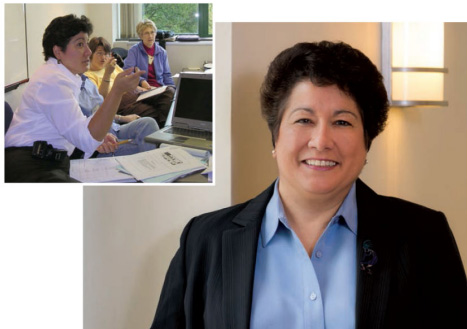Bias is something that all people have. Originating in fear or issues of safety, it is part of what has kept humankind around so long — helping us to know when to run and when to stay. Bias can be conscious (I know I don’t like green tea) or unconscious (I often order green tea, but for some reason I don’t drink it). Unconscious bias is shaped by previous experiences, what we have learned, stereotypes of society, what we read, what we see on TV. There are countless influences on unconscious bias.
Unconscious bias is important to acknowledge and understand because it drives our behavior.
In our impression of the living world, an overwhelming amount of information comes at us. What we see, what we hear, what we touch — all of our senses are giving us data, and from that data we have to figure out what to do, so a lot of it happens unconsciously. Often unconscious behavior keeps us safe, saves us time, stops us from proverbially reinventing the wheel. But it also may express unwanted biases that are hidden from our conscious selves.

Dr. Núñez is the associate dean for diversity, equity and inclusion at the College of Medicine. She is also the director of the Women’s Health Education Program and a professor of medicine in the Division of Internal Medicine.
One way we can discover our hidden biases is through the Implicit Association Test (IAT), developed by the psychologists Anthony G. Greenwald and Mahzarin R. Banaji, and extensively studied by them and others. Banaji and Greenwald are the authors of a fascinating book on the topic, Blindspot: Hidden Biases of Good People (Delacorte Press, 2013). “By ‘good people,’” the authors explain, “we refer to those, ourselves included, who intend well and who strive to align their behavior with their intentions.”
There are Implicit Association Tests related to different topics, but let’s consider perhaps the most daunting, the Race IAT. In Blindspot, Banaji, an IndianAmerican woman, recounts how horrified she was when the test showed that she tilted pro-white, anti-black. How could this be? She expected to be midline at least. Most people who want to be fair and balanced are upset by their results because they are at odds with their conscious beliefs.
The question is “How can we mitigate hidden bias on an ongoing basis?” The literature reveals that even simple interventions can make a difference. For herself, Banaji created a screensaver with rotating images of a diverse array of people, especially counter-stereotypes. Her goal is to build up a different set of unconscious associations. Raising awareness can be effective. Some students at an orientation saw a short video; the other group were told to find a study partner. The video had two dissimilar seeming students talking about how they became amazing study partners and great friends. The video watchers ended up having increased interest in exploring and meeting their fellow classmates (aka inclusive behavior) compared to those who had not watched.
In health care, unconscious bias can adversely impact the patient. It was long held that women were at low risk for heart disease, and this thinking affected their treatment. New guidelines reflect that while women’s risk is generally lower than men’s, it is still significant enough to call for screening. Does the doctor follow the guideline or make a judgment based on the stereotype? On an institutional basis, a practice that intends to give excellent care to everybody, regardless of who they are, can look at the data. The gap between good intention and good action is in the record.
At the College of Medicine, as we seek to be a truly inclusive environment, all search committees now have some unconscious bias training. We’re not pursuing diversity for diversity’s sake or inclusion for inclusion’s sake. It is not a little side thing; it really is integral to our mission if we’re going to get to destination excellence.